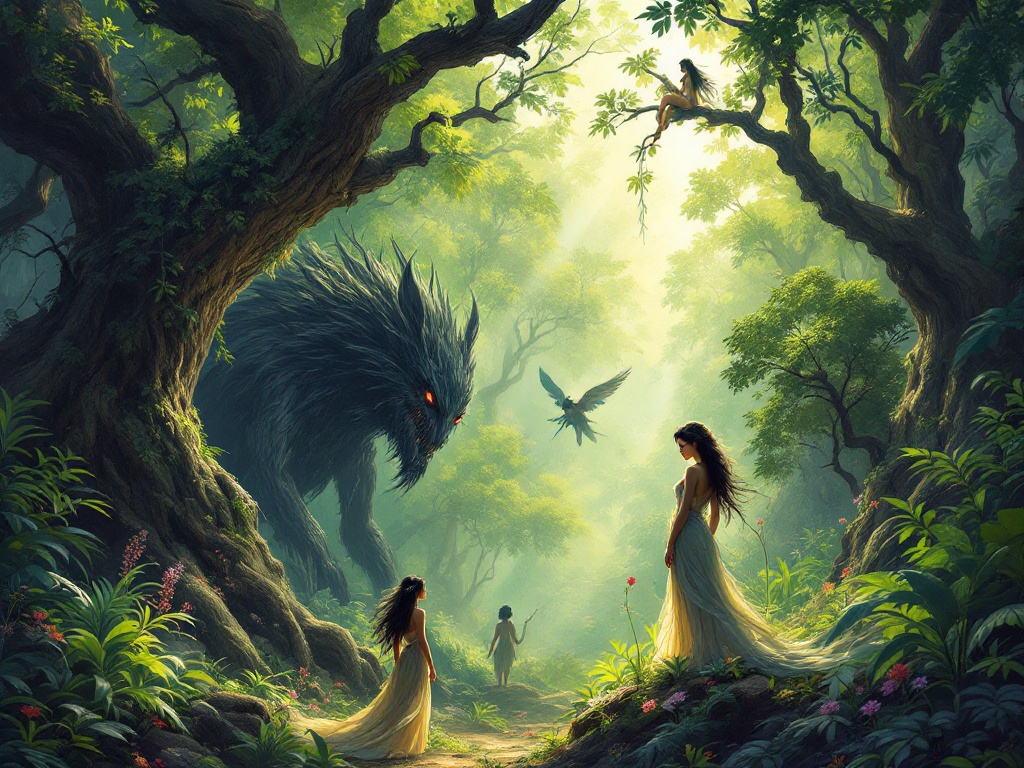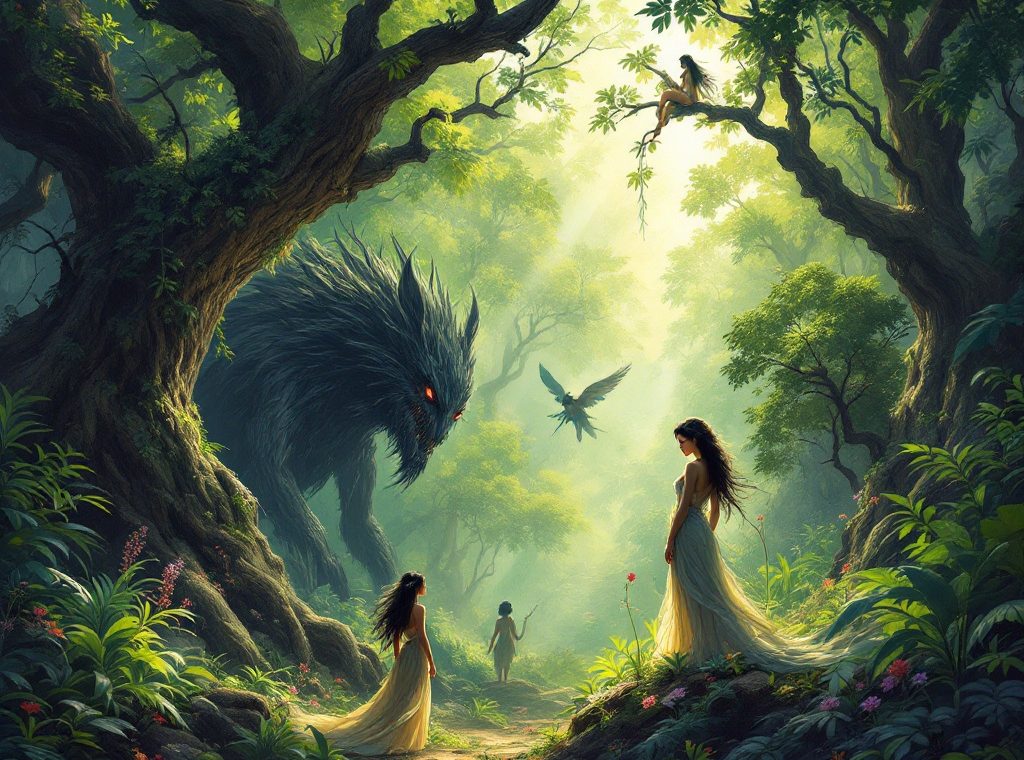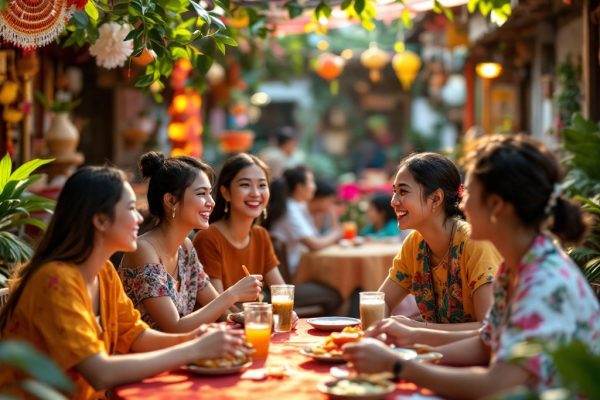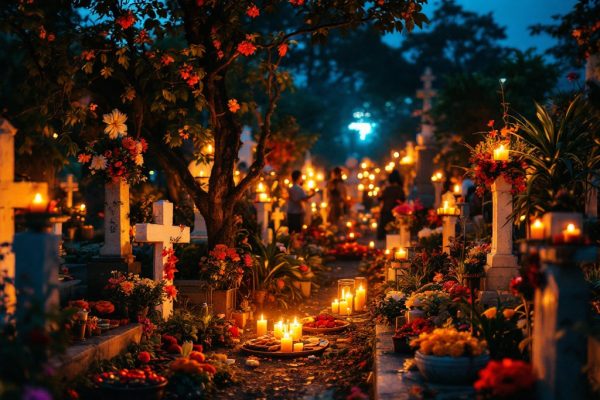Filippino Mythical Creatures You Should Look Out for
Dive into the mesmerizing world of Filipino mythology, a realm teeming with captivating creatures from benevolent spirits to fearsome monsters. Discover the Diwata, guardians of nature, and the Tikbalang, a mischievous half-horse, half-human trickster. Uncover the terrifying Aswang, a shapeshifting monster, and the chilling Manananggal, a vampiric entity. Explore these fascinating beings and the rich cultural beliefs they represent. Embark on this journey to understand the captivating world of Filipino folklore.
Important information

- Filipino mythology has many creatures, from kind spirits (Diwata) to scary monsters (Aswang).
- Aswang are shape-shifting creatures that can turn into different animals and are said to crave human flesh.
- Manananggal, a type of Aswang, can detach its upper body and sprout wings to hunt at night.
- Creatures like the Tikbalang (half-horse, half-human) and the Kapre (tree giant) are also popular figures in Filipino folklore.
- Many of these figures explain natural events, teach lessons, or highlight cultural values.
Understanding Filippino Mythical Creatures
Filipino mythology is rich with intriguing creatures that mirror the culture’s beliefs and fears. These beings range from kind spirits like the Diwata to fearsome monsters such as the Aswang. Some well-known figures in Filipino folklore include the Kapre, a giant that lives in trees, and the Tikbalang, a mischievous creature that is half-horse and half-human. These mythical beings often explain natural phenomena, reinforce cultural values, and teach important lessons. Adding to this rich tapestry of beings are the vampiric Manananggal and the Nuno sa Punso, a dwarf-like creature that dwells in mounds.
Haunting Presences: Ghostly and Spiritual Beings
Philippine folklore is rich with ghostly tales. Many stories feature *multo*, spirits of the deceased who return to the realm of the living. Sometimes they bear messages, other times, terror. Not all spirits are malevolent, however. *Nunò sa punso*, for instance, are small, dwarf-like guardians of mounds and natural spaces, protecting the environment.
Multo: Ghostly Apparitions
Filipino folklore is rich with tales of “multo,” spirits of the deceased who appear to the living. These spectral beings sometimes deliver messages from beyond, while other times, their intentions are more mischievous, aiming to frighten those they encounter. Multo frequently appear in Filipino narratives, reflecting their significant role in the culture.
White Lady: The Haunting Spirit
In Filipino folklore, the White Lady is a well-known spectral figure, appearing as a woman clad in white. This ghostly apparition haunts specific locations at night and is often seen as a chilling omen of impending danger or misfortune.
Nunò sa Punso: The Guardian of the Mound
Nunò sa Punso are small, dwarf-like spirits inhabiting earthen mounds called “punso”. As guardians of these mounds, they fiercely protect their territory. Disturbing a punso is believed to bring misfortune, such as illness or bad luck, upon those who disrespect them. Therefore, Filipinos respectfully say “Tabi tabi po” (Excuse me) when passing a mound to avoid any negative consequences.
Shape-Shifters and Vampiric Entities
Filipino folklore abounds with tales of shape-shifters, the most notorious being the Aswang and the Manananggal. The Aswang, a fearsome creature often associated with witchcraft and cannibalism, possesses the ability to morph into various forms. A particularly horrifying variant of the Aswang is the Manananggal, invariably female, who can sever her upper body and sprout bat-like wings to pursue her prey at night. Both figures embody societal fears of the unknown and the hidden perils of darkness.
Aswang: A Cadaver-Eating Creature
Aswangs are shape-shifting monsters from Filipino folklore that crave human flesh, particularly that of pregnant women and their unborn children. These terrifying creatures can transform into various animals, such as dogs, cats, pigs, or birds. Often depicted with sharp claws and a long, thin tongue for extracting blood, aswangs represent more than just frightening tales. They embody the darkness within Filipino mythology, symbolizing hidden dangers and the chilling reminder of the unknown.
Manananggal: The Legendary Vampiric Creature
Filipino folklore describes the Manananggal, a horrifying aswang, as a vampiric monster known for its gruesome ability to detach its upper body from its lower half. Come nightfall, it preys on expectant mothers and their unborn. Often depicted with bat-like wings and a long, proboscis-like tongue, this creature is the epitome of a nightmare.
Supernatural Beings from the Forests and Waters
Diwata, the ethereal forest spirits, are guardians of nature, protecting the delicate balance of the ecosystem.
The Sigbin, a creature of Holy Week terror, varies in description but often resembles a dog with exaggerated ears and a long tail, chillingly sucking its victims’ blood through their shadows.
A dangerous water spirit, the Berberoka, lurks in rivers and lakes, waiting to drag unsuspecting victims to watery graves with its long hair and sharp claws.
The Bakunawa, a serpentine dragon prominent in Filipino mythology, is believed to swallow the moon, causing eclipses, and is frequently depicted in traditional art.
Diwata: Enigmatic Forest Spirits
Diwatas, revered as deities, are nature spirits protecting our forests, mountains, and seas. They are believed to possess supernatural powers. These guardians can be benevolent protectors or vengeful spirits depending on the respect they receive.
Sigbin: Holy Week Terror
Originating from Filipino folklore, the sigbin is a nightmarish creature believed to inhabit Bohol, Philippines, during Holy Week. This cryptid bears a striking resemblance to a small kangaroo, and its presence is feared by locals.
Berberoka: The Drowning Menace
Filipino mythology speaks of the Berberoka, a fearsome water creature that preys on fishermen, dragging them down into the watery abyss. This beast embodies the perils of the sea, reminding us of the caution required by those who brave the ocean’s waves.
Bakunawa: The Moon-Eating Dragon
Filipino mythology describes the Bakunawa as a serpentine dragon believed to cause eclipses by attempting to devour the moon. Ancient Filipinos, attributing lunar eclipses to this dragon, made loud noises during these events to frighten the Bakunawa away and protect the moon.
Tricksters and Mischievous Creatures
The Tikbalang, a half-horse, half-human creature, delights in misleading travelers through dense forests. Duwende, mischievous dwarf-like beings inhabiting mounds, offer a stark contrast with their playful pranks. Adding to the whimsical nature of Filipino folklore is the Bungisngis, a beast whose constant laughter echoes through the trees.
Tikbalang: The Trickster of the Forest
Filipino folklore describes the Tikbalang, a captivating and terrifying creature. Picture a horse-headed humanoid—that’s the Tikbalang. This trickster delights in misleading travelers through dense forests and treacherous mountains. However, there’s a simple defense: wearing your clothes inside out is believed to repel them. Even more intriguing, some tales claim a Tikbalang can be tamed and even form pacts with humans.
Duwende: The Mischievous Dwarfs
Duwende are mischievous, dwarf-like creatures from Filipino folklore, known for their playful tricks. But these spirits aren’t always troublesome; they can be benevolent, even bestowing gifts upon those they favor. A kind deed might earn you their blessing, and they’re often said to safeguard homes and families.
Bungisngis: The Beast Known for Laughter
The bungisngis, a mischievous creature of Filipino legend, is known for its constant laughter and playful nature. Its most striking feature is its single eye.
Giant and Powerful Creatures
The Kapre, a towering figure often seen among the trees, enjoys his large cigar. Meanwhile, the hairy, white Amomongo hides deep within the wilderness. The Tiyanak, a deceptive creature disguised as a helpless child, lures its unsuspecting victims. These potent entities embody the unpredictable, perilous, yet wondrous nature of Filipino mythology.
Kapre: The Giant of the Trees
Filipino folklore describes the Kapre as a tree-dwelling giant.
Amomongo: The Hairy White Ape
The Amomongo, a hairy, white, ape-like creature from Filipino folklore, is said to disembowel small animals. This gruesome being reportedly dwells at the base of Mount Kanlaon.
Tiyanak: The Deceptive Child
In Filipino folklore, the Tiyanak is a vampiric creature that disguises itself as a crying infant to lure unsuspecting victims to their doom. This deceptive and dangerous being craves human flesh. Its existence reflects cultural anxieties, such as infant mortality and the vulnerability of children.
Dark Arts and Curses
In Filipino culture, mangkukulam are feared figures believed to practice dark magic, inflicting curses and hexes. This fear reflects a deep-seated anxiety surrounding witchcraft.
Mangkukulam: Mysterious Practitioners of Dark Arts
Filipino folklore describes mangkukulam as witches or sorcerers who wield dark magic. They inflict curses and hexes, causing mysterious illnesses and misfortune. Consequently, they are figures of fear and dread.















